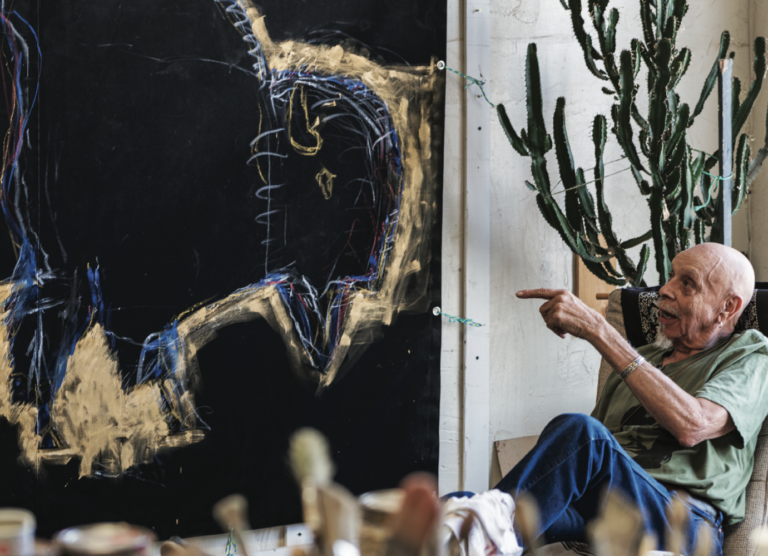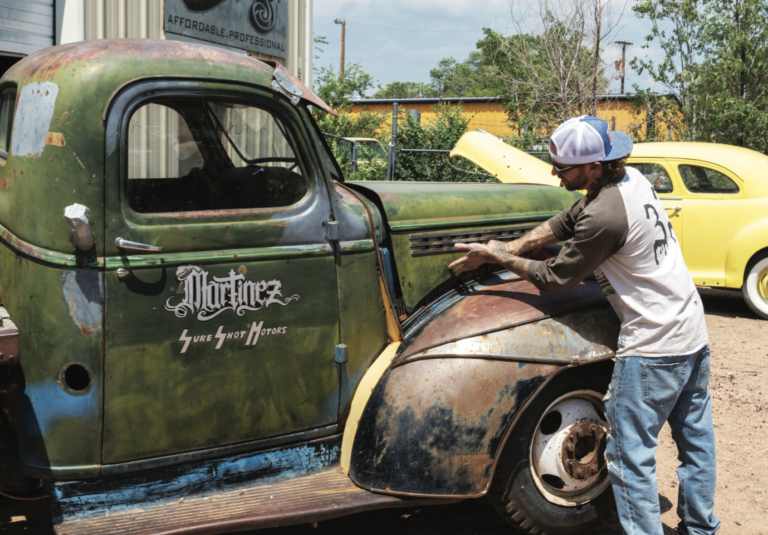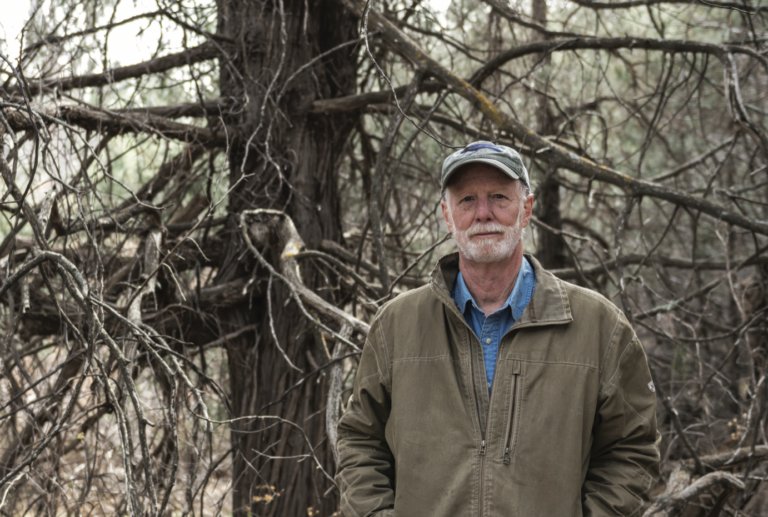FIVE MILES NORTH of El Rito is an open field housing an assemblage of enormous wooden flight cages. This is the Santa Fe Raptor Center, where director Lori Paras nurses injured eagles, hawks, falcons, and owls.
Lori was in the Peace Corps, standing on a beach in the Philippines, when she made the decision to dedicate her life to animals. “I was a receptionist, but I hated offices. And I loved animals.” She volunteered at Dr. Kathleen Ramsay’s New Mexico Wildlife Center in Española. And in 2004, she started the Raptor Center. This sunny spring day, she’s taking care of a dozen birds, including four eagles.
Bubba
Bubba is a bald eagle struggling with bad lead poisoning. His levels are so high that he shouldn’t be alive. A fisherman saw him flapping and not flying and called us.
The lead came from an animal that was shot that Bubba ate. Hunters often cut out gun lead from a kill and leave it on the ground. Or fish swallow lead weights and eagles eat them. Lead is a soft metal and oxidizes in their digestive systems then absorbs into the organs, bones, and blood.
We do a process called chelation, where the lead is removed from the blood and kidneys with a special agent that draws out the metal. It is a long process, but Bubba’s getting harder to catch for treatment – a very good sign!
Once he’s better, we’ll move Bubba to a flight cage to rebuild his muscles. SFRC is one the few rehab centers that has a cage like this – it’s large enough for the birds to fly back and forth, significantly speeding up the recuperation. It will take four to six months in the flight cage before he can return to the wild.
The whole time we’re nursing him, we have to be very careful since he’s a bald eagle. Golden eagles are more mellow. Bald eagles want to take your face off. Seriously. You have to hold them low enough so they can’t snap at your face. And their feet can easily break fingers – or arms. They could kill us if they wanted to, but luckily I don’t think we taste very good.
Chaco
We have a golden eagle now that is 22 years old. They usually live 9-15 years. We know he’s that old because the man who found him checked the bands on his legs and realized that he was the same person who banded him two decades ago! Chaco was hit by a car and is having flying problems. The golden eagle is a very sacred bird in Navajo culture; this one has lived on the reservation for a long time, so he has no signs of lead poisoning.
Parkour
We have another golden called Parkour – he does all kinds of acrobatic flying. He had lead poisoning but is flying well now and will be released soon. We are losing 14% of goldens and balds to lead poisoning.
I am so in love with these eagles. I have four, probably more than anyone in the state right now. They start their stay here in my house next door. We call it the ICU. When they first come, I keep them in dog crates in the house. If they have lead issues, you have to take them out three times a day for chelation.
During this time, you are cutting up rats, skinning them, and cutting the guts out. You’re doing gross things. People romanticize what I do, but some of it is pretty nasty.
When the eagles start to bang in their crates, they are ready for the flight cage.
B-Boy
B-Boy is our burrowing owl. We call him that because he bounces around like a break dancer. Burrowing owls live in the ground in prairie dog holes – they have a reciprocal relationship, guarding the prairie dogs’ homes. Incredibly, they make noises just like rattlesnakes to ward off predators.
We have a lot of babies this time of year. We get orphans that we raise and release. We keep them warm and hand-feed all of the tiny mouths five times a day. When they’re old enough, we move them to a larger cage with a kiddie pool full of sand and add live rats. Once the owls can eat live rats, they’re ready to go into the wild.
I have a source for rats, mice, and quail. I call him the rat man. That’s literally his name in my phone. I couldn’t tell you his actual name. Luckily, he doesn’t look in my phone.
Queen Bee
We take mostly raptors, but I did have a freshwater pelican last year – Queen Bee. She was hit by a car and had a broken wing. Pelicans eat live fish, and that was a challenge. You have to hold the pelican’s neck and squeeze so the fish doesn’t come back up. I had to fight her every day to keep her alive. And she snapped at everyone except for me.
I get attached to these guys, but attached to them being free.
Learn more at instagram.com/santaferaptorcenter
Photo SFM








